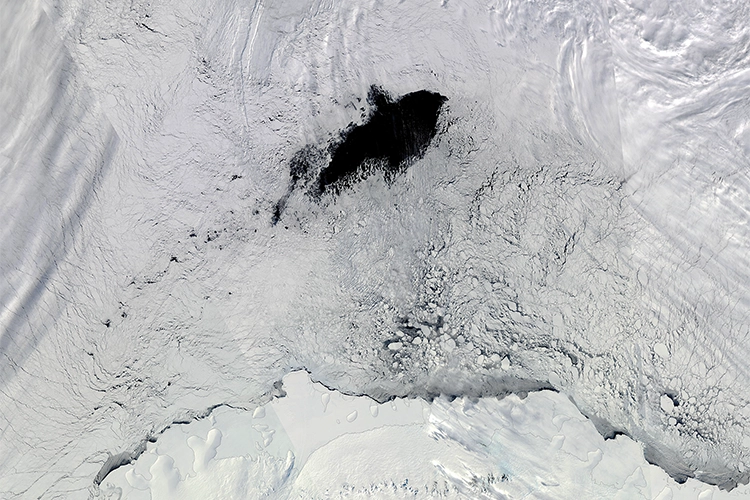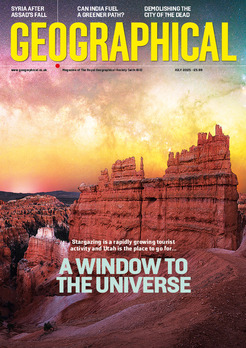
Polynyas are more than holes in Arctic & Antarctic ice – they’re vital hotspots where marine life thrives and the ocean breathes
Across the expanse of the Arctic and Antarctic, seemingly out-of-place patches of open water appear amid the solid sea ice. Known as polynyas, they are far more complex and ecologically vital than their simple appearance suggests.
A polynya might seem like just a hole in the ice; however, how it forms is a subtle interaction between the ocean and the atmosphere. Strong winds near the coast push the more fragile sea ice away from the land, creating open water areas. The process is more intricate in the open ocean, often requiring a disruption in the ocean’s stratified layers, where colder, fresher water typically sits atop warmer, saltier depths. When this layering collapses, warmer water rises, preventing ice formation and allowing the ocean to ‘breathe,’ releasing gases into the atmosphere. Underwater geological features, such as the towering Maud Rise seamount in the Southern Ocean, can also play a crucial role by diverting currents and creating the conditions for these open-water havens.
The discovery of large polynyas dates back to the emergence of remote-sensing satellites in the 1970s. The Maud Rise polynya, for example, captured the scientific community’s attention when it appeared several winters in a row in the 1970s. However, these appearances decreased until 2017, when the largest and longest-lasting polynya appeared again, equalling the size of Switzerland!

Using marine animal tagging, robotic floats and a high-resolution ocean model, scientists discovered that an accelerated Weddell Sea Gyre brought warmer, saltier water to the surface, melting the sea ice from below. Powerful extratropical storms also delivered a significant impact. Their swirling winds pushed sea ice away from Maud Rise while also pulling salty water towards it. Additionally, atmospheric rivers – long streams of moist air – brought warmth from above, helping to break down the ocean’s layered structure. From here, a process called Ekman transport – wind-driven water transport deflected by the Earth’s rotation – allowed further saltwater into the area of Maud Rise, explaining why the meltwater hadn’t re-frozen the polynya.
Check out more weird and wonderful phenomena…
The open water of polynyas is crucial for Arctic and Antarctic ecosystems, acting as vital havens for marine life. Sunlight penetrates these openings, supporting phytoplankton blooms that feed a rich food web. These ‘breathing holes’ are essential oases for life in the frozen seas, but their long-term stability faces challenges in a changing climate.




